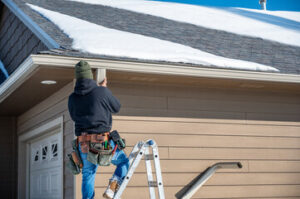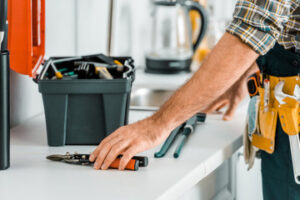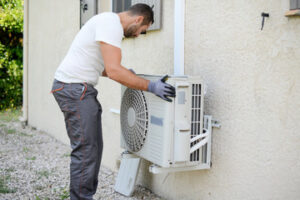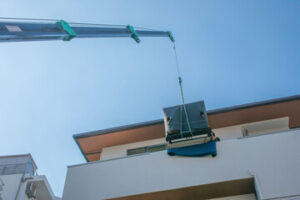The process of Junk Removal Murrieta is not just about getting rid of unwanted things. It reflects shifting habits. People today are more conscious of their surroundings. They want cleaner spaces and faster solutions.

Junk can pile up in any space whether at home or work. Over time, these items lose value and create clutter. This clutter affects productivity and mood. That is why many seek new ways to deal with waste.
Modern junk removal services go beyond traditional hauling. They now involve advanced sorting and disposal. Some even focus on reuse and transformation. This change aligns with global waste management trends.
There is a quiet efficiency in these services today. They use scheduling platforms and mobile teams. Junk is removed without disturbing daily routines. It happens fast and with little disruption.
One reason for the surge in junk removal demand is urban living. Small spaces cannot hold unused items for long. Residents often replace furniture and electronics. That leads to recurring junk buildup.
Some companies now specialize in unique waste categories. They focus on items like appliances, yard debris, or electronics. This targeted approach improves removal speed. It also ensures correct disposal methods.
People are more informed about junk types now. They want to know where their junk goes. Transparency has become a big deal. It builds trust between providers and users.
Digital solutions have changed the entire system. Online bookings are standard now. Automated reminders make it hard to forget. Payment and feedback happen in real time.
Mobile fleets carry out most of the work. These fleets are equipped with smart tools. They know the volume and weight of junk quickly. That improves sorting and disposal plans.
Recycling is now a key element in junk removal. Some teams separate recyclable materials at pickup. Others partner with local recycling centers. This ensures less waste ends up in landfills.
Junk removal is no longer limited to physical spaces. Digital clutter is also gaining attention. Old gadgets and storage devices get picked up too. These are processed with data privacy in mind.
People feel better after junk is cleared. It brings a fresh sense of space. Even mental clarity improves. That shows how powerful this service can be.
Homeowners are not the only clients. Offices, schools, and construction sites also rely on junk removal. These clients often need fast and large-scale service. Specialized teams handle these with precision.
Green initiatives are part of the system now. Some junk removal companies plant trees per pickup. Others run on electric vehicles. These efforts attract more conscious customers.
The pandemic influenced junk habits greatly. Remote work led to more home upgrades. As people renovated spaces, junk piled up. The removal industry saw a major boost.
Tech integration helped the industry scale. Drones are used for property assessment. Apps allow picture uploads of junk. AI helps predict junk volume from images.
Customer service plays a large role. Speed and attitude matter a lot. People want polite and efficient handlers. That can define repeat business.
Awareness campaigns promote correct disposal. These teach users what can or cannot be removed. Some even provide donation options. This encourages community recycling.
Events like clean-up drives now include junk removal. Volunteers gather items and trucks haul them. These efforts help beautify neighborhoods. They also foster collective responsibility.
Pricing models are more flexible today. Some charge by weight, others by volume. Time-based packages are also available. That helps fit different customer needs.
Seasonal trends affect junk removal too. Spring and end-of-year clearouts are common. Companies prepare for higher demand during these times. Extra manpower and trucks are deployed.
Safety is taken more seriously now. Crews wear protective gear. Hazardous waste gets special treatment. That keeps both workers and residents safe.
Training matters more than ever. Workers are taught sorting, lifting, and communication. They also learn basic repair for reusable items. That adds value to the overall service.
Some providers now offer storage solutions. They remove junk and store items temporarily. This helps during moves or renovations. Clients appreciate the added convenience.
Donations are a rising trend in junk removal. Instead of disposal, some items go to shelters. Others are sent to community centers. This reduces waste while helping those in need.
Design is also influencing the field. Smart bins and labeled bags help people pre-sort. Homeowners find it easier to separate junk types. That saves time during pickups.
Junk removal ties into minimalism. More people seek simple living. Letting go of unused items is part of that journey. Removal services support that lifestyle shift.
Pop culture shapes the demand subtly. Shows about organization inspire viewers. They want neat spaces like those on screen. This leads them to declutter more often.
Freelancers are also entering the scene. With a van and online reach, they offer flexible pickups. They handle small-scale jobs fast. Clients often prefer them for affordability.
Corporate clients seek regular service contracts. They schedule pickups every week or month. This ensures a clean workplace at all times. It also improves brand image.
Smart analytics help track junk patterns. Companies use data to improve their service. They learn what items are most disposed of. That informs future planning and resource use.
Workshops now teach people how to declutter. These events promote sustainable junk removal. They also explain how to reuse or upcycle. The goal is waste prevention before pickup.
Disaster recovery is a hidden area of junk removal. After floods or storms, debris builds up fast. Teams are trained to handle such events. Their role becomes vital in recovery efforts.
Some providers now explore composting. Organic junk is turned into soil enhancer. Clients love the idea of giving back to nature. It completes a healthy waste cycle.
Technicians often find lost treasures in junk. Some are returned to clients. Others are cleaned and auctioned for charity. These stories build public trust.
Service customization is growing. Clients ask for time-specific or discrete pickups. Some want zero contact pickups. Options are expanding to meet these needs.
Marketing for junk removal is getting creative. Short videos show before-and-after transformations. Memes and tips circulate on social media. These grab user attention and build curiosity.
Laws affect junk handling deeply. Permits are needed for hazardous items. Licensing ensures environmental compliance. Providers must stay updated on these rules.
Collaborations are shaping new opportunities. Real estate agents recommend junk removal. Landlords seek fast turnover services. These partnerships benefit all parties.
Expansion into rural zones is happening. Small towns need reliable junk solutions. Providers are mapping routes to reach them. That spreads cleaner living beyond cities.
Waste volume sensors are being tested. These alert teams when bins fill up. It saves time and reduces missed pickups. Automation improves logistics here.
Fleet maintenance is also key. Trucks must operate efficiently. Electric or hybrid vehicles reduce costs. They also help the brand look modern and green.
In the future, junk removal may involve robotics. Machines can sort, load, and clean. That reduces physical strain on workers. It also improves task speed and safety.
Education will continue to shape the industry. Schools may teach waste separation early. That builds awareness in the next generation. More responsible habits will form.
Junk removal will stay vital in every community. Spaces will always need clearing. Whether digital or physical, clutter remains. What changes is how we deal with it.







